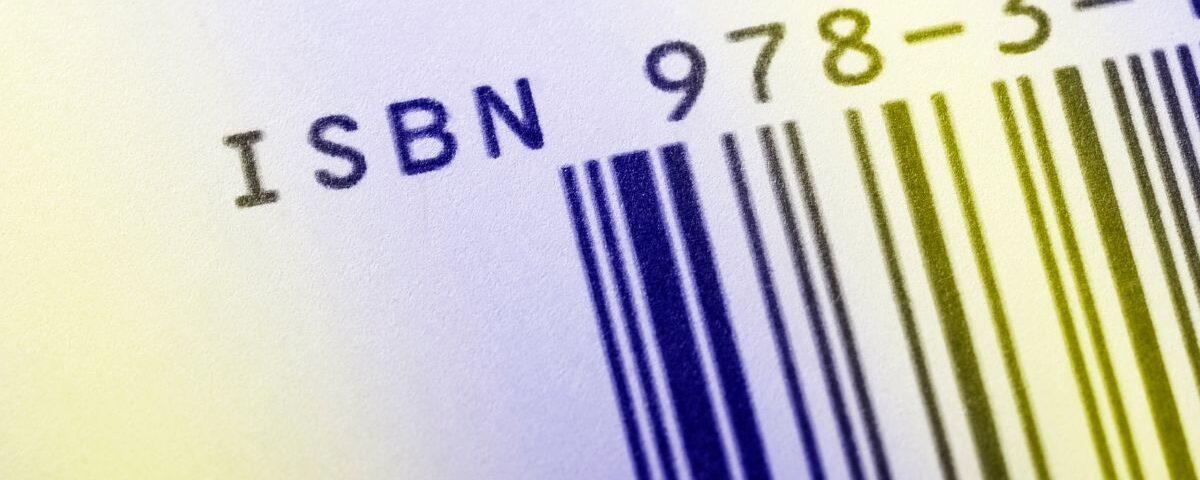
How to Book Spine Design: A Complete A-to-Z Guide for Authors
September 24, 2025Maybe you’ve seen a strange search term like “how to what is ISBN number” and wondered what it means. It usually boils down to two questions: what is an ISBN number, and how to get one. If you’re an author or aspiring writer, this question is important. I remember thinking that ISBNs were expensive and hard to obtain, but the truth is, it’s a lot simpler than it first appears. In this guide, we’ll explain exactly what an ISBN number is and walk you through how to get one for your book without the headaches (or you can always hire AGPS Books to handle it for you).
What Is an ISBN Number?
ISBN stands for International Standard Book Number. It is a unique numeric identifier assigned to books (and similar publications) worldwide. Every book format and edition (hardcover, paperback, ebook, etc.) must have its own ISBN. For example, a hardcover and paperback edition of the same title each get a different ISBN. ISBNs used to be 10 digits long, but since January 1, 2007 they have been 13 digits (using prefixes 978 or 979). You might see “ISBN-13” referring to the newer 13-digit format.
“An ISBN (International Standard Book Number) is a unique identifier for books. It helps bookstores, libraries, distributors, and readers find and reference your book correctly.”
Why does this matter? An ISBN is essentially the “product code” for your book. It links to the book’s metadata (title, author, publisher, edition) in global databases. Whenever a retailer or library searches for your book, the ISBN tells them exactly which book and edition you mean. Without an ISBN (or an ISBN-13), bookstores and online sellers generally won’t be able to list your book in their catalogs. Even on platforms like Amazon KDP, you’ll be asked to provide an ISBN for your print books (although KDP can give you a free one in some cases, more on that below).
- An ISBN is used by publishers, bookstores, and libraries worldwide as a unique product identifier.
- Each format/edition (hardcover vs. paperback vs. eBook) gets its own ISBN, so readers always get the correct version.
- Most retailers require an ISBN to sell your book; it also helps with marketing, distribution, and tracking your book’s sales data.
ISBN vs. ISBN-13, What’s the Difference?
You may hear the terms “ISBN-10” and “ISBN-13.” Originally, ISBNs were 10 digits long (ISBN-10) and included a check digit. After 2007, the standard switched to 13-digit ISBNs (ISBN-13) to align with international barcode standards. In practice, ISBN-13 codes always start with 978 or 979 to indicate the book industry. For any ISBN-10 from the old system, you can convert it to ISBN-13 by prefixing it with 978 and recalculating the check digit.
- ISBN-10: 10-digit format (used pre-2007). Each ISBN-10 can be converted to ISBN-13 by adding the 978 prefix.
- ISBN-13: 13-digit format (used since 2007). Always starts with 978 or 979.
Why Do You Need an ISBN?
If you’re writing a book, getting an ISBN should absolutely be on your publishing checklist. It may feel like a small detail compared to editing, design, or marketing, but the ISBN is what anchors your book in the professional publishing world. Without it, your work can easily remain invisible, no matter how brilliant it is. Let’s break down why it matters so much:
- Discoverability
An ISBN connects your book’s details to industry databases such as Bowker’s Books in Print. These databases are the backbone of how retailers, libraries, and distributors identify titles. When your ISBN is registered, your book becomes part of a searchable network that professionals use every day. Imagine a librarian typing your title, if your ISBN is missing, your book may never show up. With it, you’re discoverable worldwide. - Distribution
Most major outlets, from Amazon and Barnes & Noble to IngramSpark and independent bookstores, require an ISBN for every edition they sell. That means your paperback, hardcover, and ebook each need their own number. Without one, your sales options shrink dramatically. Having an ISBN keeps your book eligible for placement across multiple platforms, rather than limiting you to a single store. - Metadata and Accuracy
Each ISBN ties directly to critical information, author name, title, edition, publisher, and format. This metadata prevents costly mistakes, like a bookstore ordering the wrong version or a distributor mislabeling your book. For readers, it ensures they get the exact edition they want, whether it’s a glossy hardcover gift edition or a budget-friendly paperback. - Professionalism and Trust
An ISBN signals that your book is real and professionally produced. Many readers may not consciously look for one, but bookstores and reviewers do. A book without an ISBN can feel like an unfinished product. With one, you establish credibility with gatekeepers in the industry, increasing the likelihood that they’ll stock, recommend, or review your work.
In short, an ISBN, especially in its current ISBN-13 format, isn’t just a formality. It ensures your book can be ordered, sold, tracked, and respected across the global publishing chain. Without it, many sales channels simply won’t touch your book, leaving it isolated and far less likely to reach the readers it deserves.
How to Get an ISBN Number (Step-by-Step)
Getting an ISBN is easier than it seems. Here’s a step-by-step guide:
- Decide which ISBN you need: If you plan to publish only on Amazon’s platform, you can opt for a free ISBN provided by Amazon KDP. This ISBN will list “Independently published” (or “Amazon”) as the publisher, and it cannot be used outside Amazon. If you want to use your own publishing name or sell your book on other retailers, you’ll need to buy your own ISBN.
- Find the official ISBN agency: ISBNs are issued by national agencies. In the U.S., Bowker (MyIdentifiers.com) is the official source. Other countries have their own agencies (see the International ISBN Agency list). Create an account with your national ISBN agency. (You do not need to buy through a reseller; go straight to the official agency.)
- Purchase the ISBN: On the ISBN agency site, provide basic info about your publishing (name, address) to get an account. Then you can buy ISBNs in blocks or singly. For example, Bowker sells one ISBN for $125, or a block of 10 for $295 (about $29.50 each). Buying multiple ISBNs at once is cheaper if you plan to publish many books or formats. Note: ISBNs never expire once purchased.
- Enter your book details: Once you have an ISBN, you’ll need to assign it to your book. On the agency’s website, enter the book title, author name, publisher name (your imprint), and edition details exactly as they will appear. (On Amazon KDP, you’ll also need to enter these in the title setup.) Make sure the metadata is correct because it cannot be changed later. This step officially registers your ISBN in global databases.
- Get your barcode (for print books): If you’re publishing a physical book, you’ll also want a barcode image to put on the back cover. Bowker and other agencies often sell bundled ISBN+barcode packages. For example, Bowker offers 1 ISBN + 1 barcode for $150. Alternatively, services like AGPS can generate the barcode for you when they do the ISBN registration. Barcodes make it easy for retailers to scan and sell your book.
- Use the ISBN in publishing: Now that you have your ISBN, use it whenever you publish or distribute your book. For print-on-demand or offset printing, include the ISBN in your interior files and cover design. When uploading to platforms like Amazon KDP or IngramSpark, enter your own ISBN (instead of opting for a free ISBN). This ties your published book to the ISBN you registered.
- Get help if needed: If all of this still seems confusing, remember that professional services exist to help. For instance, AGPS Books offers an “ISBN Guidance” service starting at $79, which handles Bowker registration, barcode generation, and file setup. Using a service like this means you get your ISBN with expert support.
Here’s an example of how these steps pay off: Once you register your ISBN and submit your book to a retailer (say, Amazon or Barnes & Noble), their system will recognize the ISBN and link it to the title info you provided. Your book will then appear in search results, and sales will be tracked under that ISBN. Over time, having an ISBN lets you analyze sales across formats, for instance, comparing paperback vs. ebook sales of your title.
It might seem like a lot of steps, but many authors find it goes smoothly once they start. And if you ever feel stuck, remember that AGPS’s editorial and publishing teams can secure ISBNs and barcodes for you (as their editorial services page notes), so you can focus on writing your next book.
By following these steps, you’ll demystify the ISBN number process. No more wondering “how to get ISBN number” you’ll have it done!
Find a Book Using ISBN
One of the greatest advantages of ISBNs is that they allow anyone, authors, readers, librarians, and booksellers, to find a book with complete precision. Titles and author names can be duplicated or confusing. Just think of how many books share names like Hope, Love, or Journey. But an ISBN is unique, meaning no two books in the world share the same number. That makes it the ultimate search tool when you’re trying to locate a book quickly and without errors.
For example, let’s say you’re trying to buy a specific edition of a classic like Pride and Prejudice. There are hundreds of editions out there, paperbacks, hardcovers, annotated versions, study guides, even illustrated collector’s items. Typing “Pride and Prejudice” into an online bookstore will bring up an overwhelming number of results. But by entering the exact ISBN into the search bar, you’ll immediately land on the precise version you’re looking for. This applies across Amazon, Barnes & Noble, library catalogs, and even global search engines like Google Books.
How ISBN Searches Work in Practice
Most online platforms have a dedicated search field where you can paste the ISBN. Here are a few examples:
- Amazon: Copy and paste the ISBN into the Amazon search bar. The platform will take you directly to the book’s product page.
- Google Books: Entering the ISBN pulls up the registered metadata, including the title, author, publisher, and sometimes a preview of the content.
- Library Catalogs: Systems like WorldCat or local university libraries use ISBNs as the gold standard for accuracy. If you give a librarian the ISBN, they can instantly confirm whether they have that edition in stock.
Fun fact: Some independent bookstores also use ISBN-based search tools that allow you to check availability across multiple shops. In fact, many apps for book lovers now let you scan the barcode (which encodes the ISBN) with your phone to instantly find the book online.
For authors, this is more than just a convenience, it’s a professional edge. When readers, journalists, or event organizers want to reference your book, the ISBN guarantees they’re pointing to the correct version. It avoids confusion and ensures your work stands out in a crowded marketplace. In short, mastering how to find a book using ISBN is a simple trick with powerful benefits for both readers and authors.
Where Is the ISBN on a Book?
If you’ve ever picked up a book and wondered where to find its ISBN, you’re not alone. The ISBN is printed on almost every professionally published title, but its location can vary slightly depending on the format.
Most often, you’ll find the ISBN on the back cover of the book, near the barcode. This placement makes it easy for bookstores to scan and catalog the title. In fact, if you flip over any paperback or hardcover, that little block of numbers under the barcode is the ISBN.
Inside the book, publishers also include the ISBN on the copyright page (sometimes called the verso). This page usually sits right after the title page and contains publishing details such as the publisher’s name, year of publication, and edition information.
For ebooks, you won’t have a physical barcode, but the ISBN is still listed in the metadata and often appears on the digital copyright page. Audiobooks may display it on their packaging or in the digital description field where you purchase or download them.
Does KDP Provide a Free ISBN for Journals?
Amazon’s Kindle Direct Publishing (KDP) has become one of the most popular platforms for self-published authors. One of its biggest perks is that it offers a free ISBN option when you publish your paperback or hardcover book. But what about journals, notebooks, or low-content books? The answer is a bit nuanced.
KDP does provide free ISBNs, but there are limitations. When you accept the free ISBN from Amazon, the listed publisher will be shown as “Independently published”. This is fine if your goal is simply to make your journal or notebook available quickly, but it also means you don’t control the publisher imprint attached to that ISBN. If you want your journal to reflect your own publishing brand or company, you’ll need to purchase an ISBN from Bowker (in the U.S.) or through an agency like AGPS Books.
Pros and Cons of Using KDP’s Free ISBN
- Pro: It’s free, so you don’t need to worry about upfront costs.
- Pro: It allows your journal to be distributed through Amazon and cataloged properly.
- Con: The publisher imprint is locked as “Independently published,” not your own name.
- Con: That ISBN is tied exclusively to Amazon’s ecosystem, you can’t use it on IngramSpark or other distributors.
If your goal is to sell simple journals, planners, or notebooks primarily on Amazon, KDP’s free ISBN might be sufficient. However, if you plan to expand to bookstores, libraries, or wholesale distribution, buying your own ISBN will give you more freedom and professionalism.
Can You Publish a Book Without an ISBN?
This is one of the most common questions from first-time authors: Can you publish a book without an ISBN? The short answer is yes, but with significant limitations.
Publishing Without an ISBN
If you only want to publish your book in digital format, you don’t need an ISBN to list it on Amazon Kindle. Amazon uses its own identifier called an ASIN (Amazon Standard Identification Number). Your ebook will be live and available for Kindle readers without ever needing an ISBN. The same is true for platforms like Apple Books or Kobo, they can assign their own identifiers.
But here’s the catch: those identifiers only work within that single retailer’s ecosystem. If you want your ebook or print book to be available across multiple channels, like libraries, international distributors, or brick-and-mortar bookstores, then an ISBN becomes essential.
Limitations of Skipping the ISBN
- Your book won’t appear in global databases like Books in Print.
- Bookstores and libraries will almost never order a title without an ISBN.
- You’ll be tied to a single retailer’s platform, limiting your growth as an author.
There are also legal and professional considerations. While ISBNs aren’t a form of copyright, they do act as an industry-level stamp of professionalism. A book without one might be viewed as incomplete or less credible by reviewers, book bloggers, or media outlets.
When Skipping the ISBN Might Make Sense
There are rare cases where publishing without an ISBN could work. For instance, if you’re creating a personal project, a private family memoir, or a workbook that you only plan to sell directly at events, you might not need one. In these cases, the distribution limitations aren’t an issue because your sales strategy is personal and direct.
However, for any author who dreams of building a readership, expanding beyond Amazon, or being taken seriously in the publishing world, the answer is clear: an ISBN is not optional, it’s foundational.
“An ISBN doesn’t just identify your book, it opens the doors to bookstores, libraries, and a global audience.”
Conclusion
As we’ve seen throughout this guide, understanding what is ISBN number goes far beyond a string of digits on the back of a book. It is the key that connects your work to the global publishing network, ensuring discoverability, accuracy, and credibility. Whether you’re preparing to launch your first novel, designing a journal, or expanding your reach across multiple platforms, the ISBN is the silent partner that makes professional publishing possible.
Of course, every author’s journey looks different. Some may be comfortable using free options provided by platforms like KDP, while others want the control and recognition that comes with having their own publisher imprint. The important part is that you now know the difference, and you can choose the path that best supports your goals as a writer.
If at any point you feel the process overwhelming, remember, you don’t have to navigate it alone. Our team at AGPS Books is here to walk with you, whether that means helping you secure ISBNs, polishing your manuscript, or guiding you through the many steps of publishing. Think of us as your creative allies, making sure your words find their way into the world with clarity and confidence.
Wherever you are in your publishing journey, we hope this article has given you both answers and encouragement. Your story matters, and the right tools, like an ISBN, will help ensure it reaches the readers who need it most.




